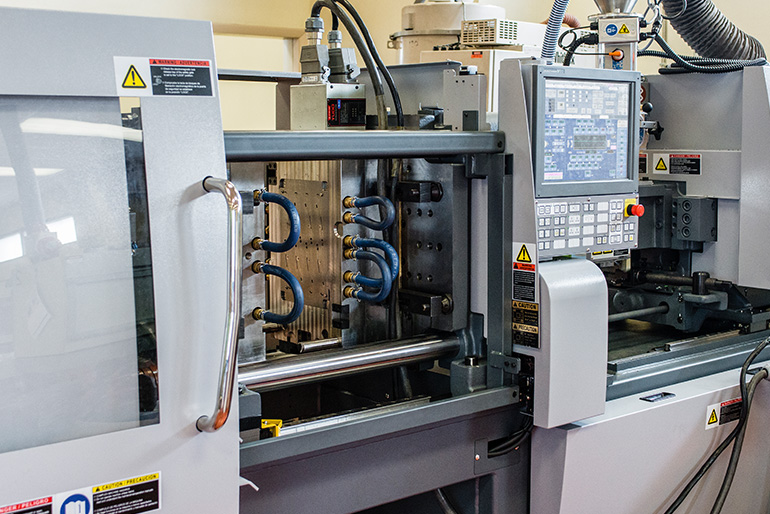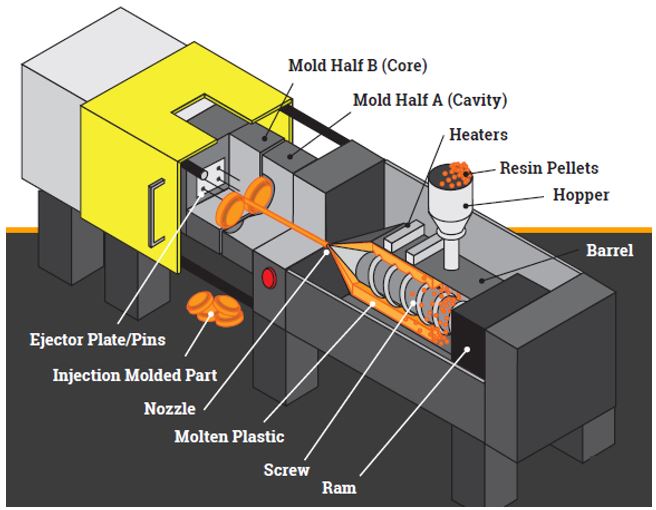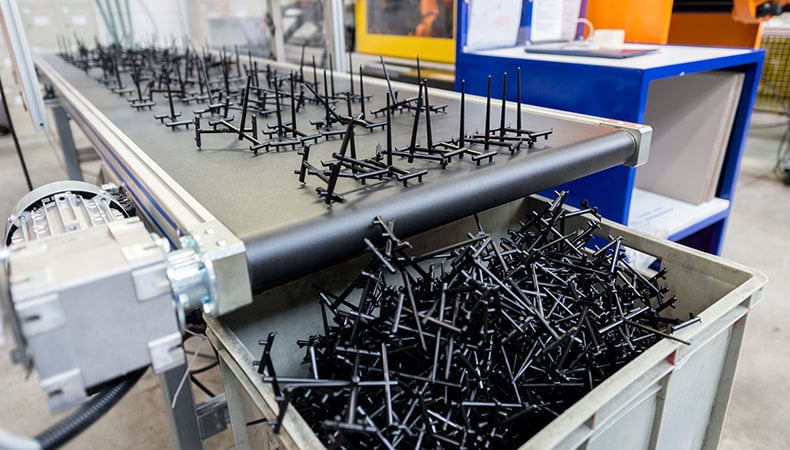Enhancing Item Development with Advanced Plastic Injection Molding Solutions
Enhancing Item Development with Advanced Plastic Injection Molding Solutions
Blog Article
Recognizing the Essentials of Plastic Injection Molding Processes
Plastic shot molding acts as a cornerstone of modern-day production, providing a systematic approach to generating complex elements with accuracy. This process not only incorporates the basic steps of melting and injecting materials into mold and mildews yet additionally entails a nuanced understanding of various influencing elements, such as temperature level and stress. As sectors significantly require performance and top quality, the intricacies of this approach end up being a lot more essential. Discovering these important aspects could reveal how even minor adjustments can lead to significant improvements in production outcomes, questioning concerning the possibility for advancement in this well established procedure.
What Is Plastic Shot Molding?
Plastic injection molding is a commonly utilized production process that transforms polycarbonate and thermosetting products into exact and complex forms. This technique is favored for its capacity to produce high quantities of the same get rid of exceptional accuracy, making it an indispensable approach in various markets, consisting of automotive, durable goods, and medical gadgets.
The procedure entails melting the selected plastic product and infusing it into a mold under high stress. The mold and mildew, designed to the specs of the wanted component, allows the liquified plastic to form as it solidifies and cools down. When the product has actually set, the mold is opened, and the completed part is expelled.
Plastic shot molding offers a number of advantages, consisting of decreased waste, uniformity in manufacturing, and the capacity to incorporate elaborate styles that may be challenging with other producing techniques. In addition, it sustains a wide array of products, each providing unique residential properties that can be customized for details applications. As sectors remain to introduce, plastic shot molding continues to be at the center, making it possible for the growth of innovative items that satisfy progressing consumer demands.
The Injection Molding Refine
The shot molding procedure is an advanced method that includes several key phases to generate high-grade plastic parts. Plastic pellets are fed right into a heated barrel where they are thawed right into a viscous liquid. This molten plastic is after that infused under high pressure into a precision-engineered mold and mildew, which forms the material into the wanted kind.
When the mold is loaded, the plastic is enabled to cool and solidify, taking the form of the mold and mildew cavity. Cooling time is critical, as it influences the cycle time and the final residential or commercial properties of the molded part. After adequate cooling, the mold and mildew opens, and the finished part is ejected making use of ejector pins.

Materials Used in Injection Molding
Various materials can be utilized in the injection molding procedure, each offering unique residential properties that accommodate details applications. One of the most generally made use of products include thermoplastics, thermosetting plastics, and elastomers.

Thermosetting plastics, like epoxy and phenolic resins, undertake a chemical change throughout the healing process, causing a rigid, stringent structure. These materials are excellent for applications requiring high warm resistance and architectural stability, commonly made use of in automotive components and electrical insulators.
Elastomers, consisting of silicone and rubber-based products, provide versatility and strength. Their unique residential properties make them suitable for applications that demand elasticity, such as seals and gaskets.
Furthermore, specialized products like bio-based plastics and compounds are gaining traction for their environmental benefits and improved performance qualities, expanding the range of shot molding applications in numerous sectors. Recognizing the residential or commercial properties of these materials is important for choosing the appropriate type for details tasks.
Benefits of Shot Molding
Shot molding sticks out as an extremely effective manufacturing process that offers countless benefits for generating complex get rid of precision. Among the most substantial advantages is the capability to produce elaborate designs that would certainly be tough or impossible to attain with various other techniques (Plastic Injection Molding). The process enables in-depth functions and tight resistances, ensuring top quality components
Furthermore, injection molding is recognized for its quick production capabilities, making it an ideal selection for high-volume manufacturing. As soon as the mold and mildew is created, components can be created quickly, lowering lead times and increasing general productivity. This performance not only decreases production costs however also gives a competitive side out there.
The versatility of products used in shot molding even more boosts its appeal. A wide variety of thermoplastics and thermosetting polymers can be used, allowing makers to select products that ideal meet their details requirements, consisting of heat, versatility, and toughness resistance.
Moreover, the process lessens waste, as excess material can often be recycled and reused. This sustainability facet adds to a lowered environmental effect, making shot molding a liable production choice. In general, the benefits of shot molding make it a recommended method for many markets.
Aspects Influencing Item Top Quality
While numerous factors can influence product high quality in injection molding, comprehending these aspects is essential for accomplishing ideal results. Secret elements include material choice, processing parameters, and mold design.
Material selection plays a vital role, as different polymers show unique homes that impact flowability, stamina, and thermal stability. Inadequate product selection can bring about issues such as bending or incomplete find filling.
Processing criteria, consisting of cycle, stress, and temperature time, have to be diligently controlled. Variations in these settings can result in incongruities partly dimensions and surface coating. Exceedingly high temperatures might trigger degradation of the polymer, while poor pressure can result in brief shots.
Mold and mildew design is just as crucial, as it identifies the circulation of the molten plastic and the cooling process. Poorly made molds might result in uneven cooling prices, resulting in recurring anxieties and dimensional inaccuracies.

Conclusion
Finally, plastic injection molding serves as a crucial production procedure that makes it possible for the reliable why not find out more manufacturing of top notch parts. Proficiency of the injection molding process, including the understanding of materials and the impact of numerous aspects on item high quality, is vital for accomplishing ideal results. The advantages of this method, such as cost-effectiveness and layout adaptability, additional highlight its importance across numerous markets, solidifying its status as a recommended selection for high-volume production.
Plastic injection molding serves as a cornerstone of modern production, offering a methodical strategy to creating complex parts with precision.Plastic injection molding uses several benefits, including reduced waste, uniformity in production, and the capacity to integrate intricate layouts that may be testing with other making techniques (Plastic Injection Molding). As industries proceed to innovate, see this plastic injection molding continues to be at the leading edge, enabling the advancement of advanced items that satisfy evolving consumer needs
The injection molding process is an innovative strategy that includes numerous vital stages to generate top notch plastic components.In verdict, plastic injection molding serves as a critical production procedure that allows the reliable production of premium parts.
Report this page